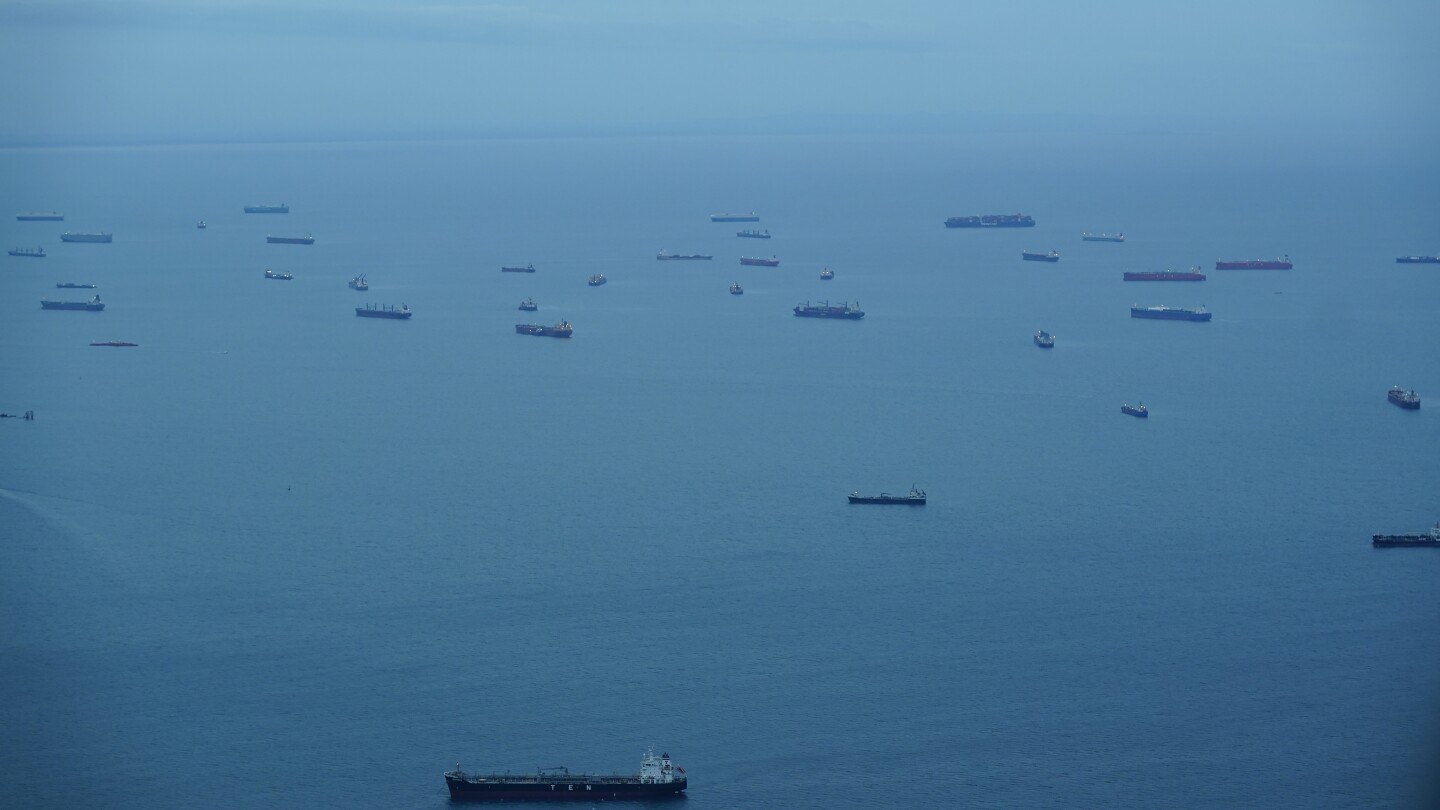The Panama Canal announced Saturday it will reduce the maximum number of ships travelling the waterway to 31 per day, from 32 in August, due to a drought that has reduced the supply of fresh water needed to operate the locks.
That compares to daily averages of 36 to 38 ships per day under normal operation.
Nine ships per day will be allowed to use the new, bigger NeoPanamax locks and 22 per day will be handled through the older Panamax locks.



Why do they need to use fresh water to fill the locks? I get that pumping salt water may come with a bit more maintenance but it just seems like a waste to use all that fresh water.
The middle part of the canal is 26 meters above sea level, and the canal is way too big for them to pump sea water into it.
This image kinda illustrates it
Easy fix, just dig down that 26 meters!
All the way across the length of the canal.
I’m sure a couple dudes with shovels could knock it out in a week.
Two weeks tops.
So interesting thing
Digging out the height difference and making it a straight shot canal would have VERY BAD ecological consequences.
Sea level on the Pacific side is higher than on the Atlantic side, meaning that opening a straight shot canal would cause the Pacific to begin draining into the Atlantic through the canal
This could have DRASTIC implications for the Caribbean and North Atlantic because, how much Pacific needs to get into the Atlantic before the water tables are balanced‽
plus it allow sea snakes in to the Caribbean
I thought sea levels were the same at the same latitude all around the globe. I feel like I’ve been lying to myself all these years now.
It’s pretty unintuitive because we’re not used to dealing with ocean sized bodies of water in day to day life. Part of the explanation is just that the prevailing winds pile all the water in the Pacific up against the coast, causing higher sea levels on the West Coast. The lower salinity of the Pacific also causes lower water density, which translates to higher sea levels.
Also tides are not the same on both sides, even if they were the same average level, the tides definitely wouldn’t be synchronized. This would result in very strong currents in the canal, making it impossible to safely navigate. The most common fix for that type of situation is to put… locks in the canal.
That’s fucking wild what lol
I saw two guys on YouTube dig a whole city in the mud by hand I bet they could totally do it lol
Why shovels when you can use plowshares?
Or maybe we should stop messing with our climate.
The canal is actually larger than I thought.
As I understand it, canal locks don’t pump water at all.
When you’re going downhill, you allow the higher water to slowly drain out of the lock, thus lowering you to the lower level
When you’re going uphill, you allow the higher water to slowly drain into the lock, thus raising you to the higher level.
In both directions the water is always flowing from high to low.
The canal traverses a fresh water lake at the middle
Because the canal is connected to Gatun Lake, a freshwater lake.
They should use crude oil, it’ll make the boats slippery so they can go through the canal faster.
No need to pay for lubrication of the mechanisms either
I wonder how many of the ships that pass through the canal wouldn’t float in oil because of its lower density.
Energy. It takes a lot of energy to get water that high.
Removed by mod
Way to accuse a county that ranks 61st on the HDI of not solving a problem because they do not fail within what you call good! You’re point is similar to asking why can’t the US solve navigation issues in the Mississippi when there’s a massive drought? And then blaming them poor people in Mississippi. What a pretentious ignorant comer you made.
Your* point.
Removed by mod
Nothing is infinite. But fresh water is renewable, which means it can be used sustainably.
WTF are you on about?
All locks work the same way as these ones, even the most modern locks in the US.
They’re not “powered” by fresh water, they’re using the normal flow of water, harnessed by valve systems, to either allow water to accumulate in the chamber or prevent that accumulation, depending on what they’re trying to achieve. The only energy consumed is a relatively small amount of electricity to power the hydraulics that open and close the valves and the lock gates themselves. Everything else is gravity.
Removed by mod
You should not comment on topics you don’t understand because you sound really, really dumb.
Having traversed the Panama Canal several times in the last 15 years, Pauli’s quote “Das is nicht einmal falsch” comes to mind.
It’s to keep it out of the hands of Nestlé
Humans are fucking stupid.
Not in this case
You are a great example.
Hugs n kisses bb